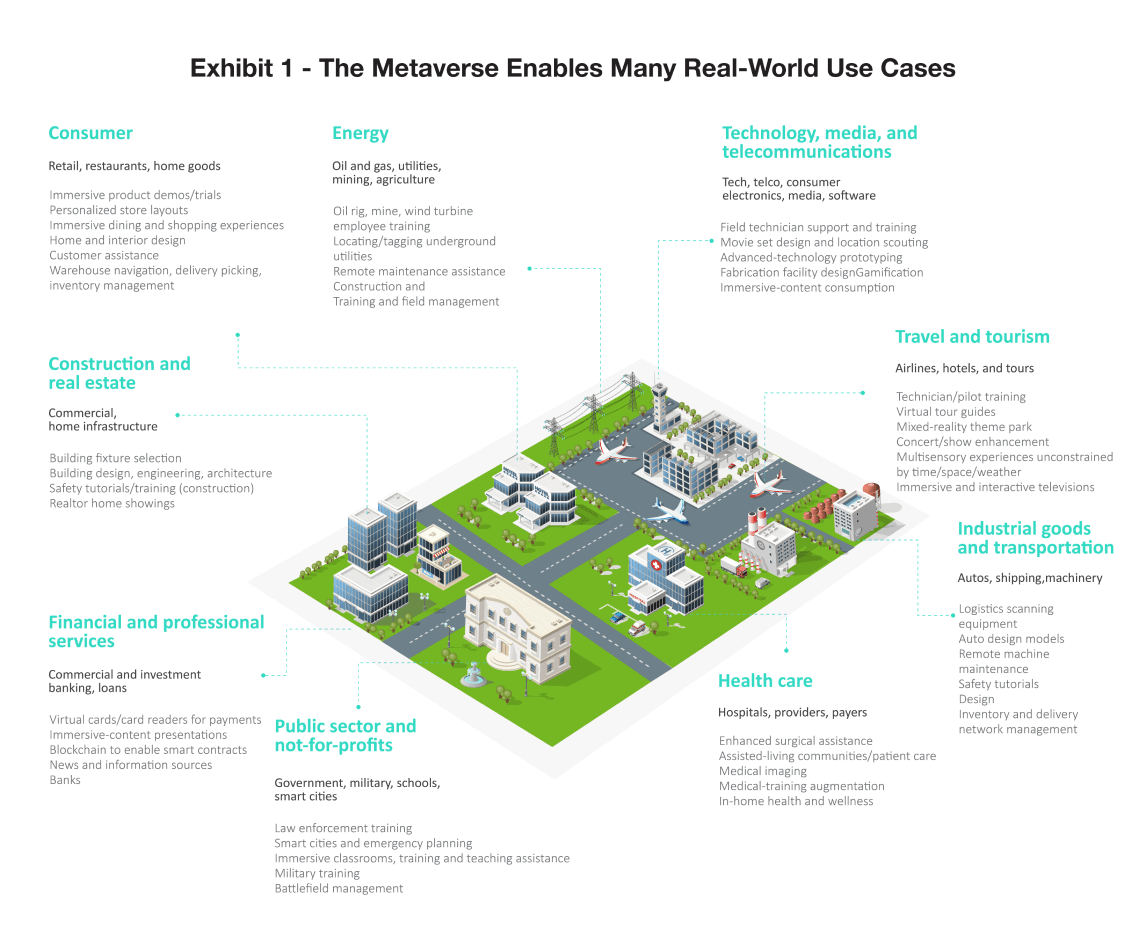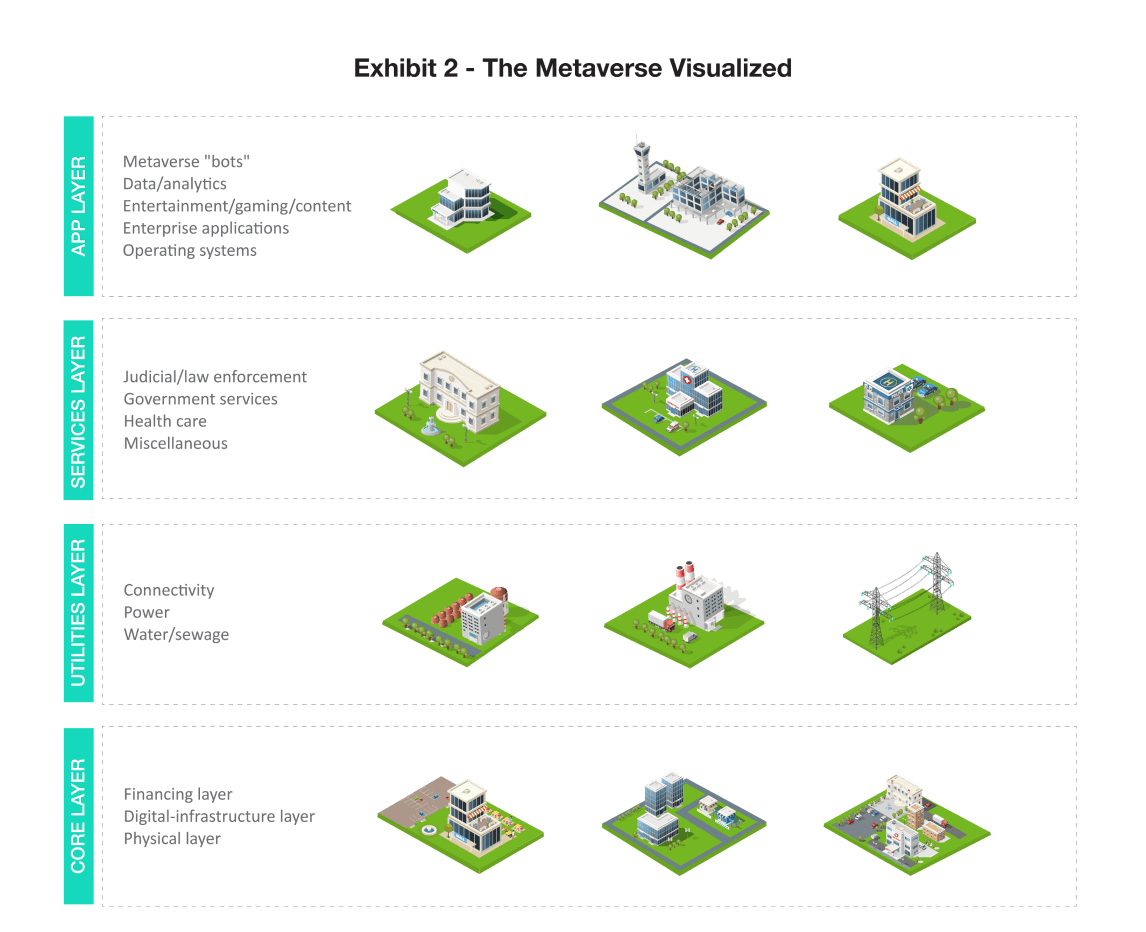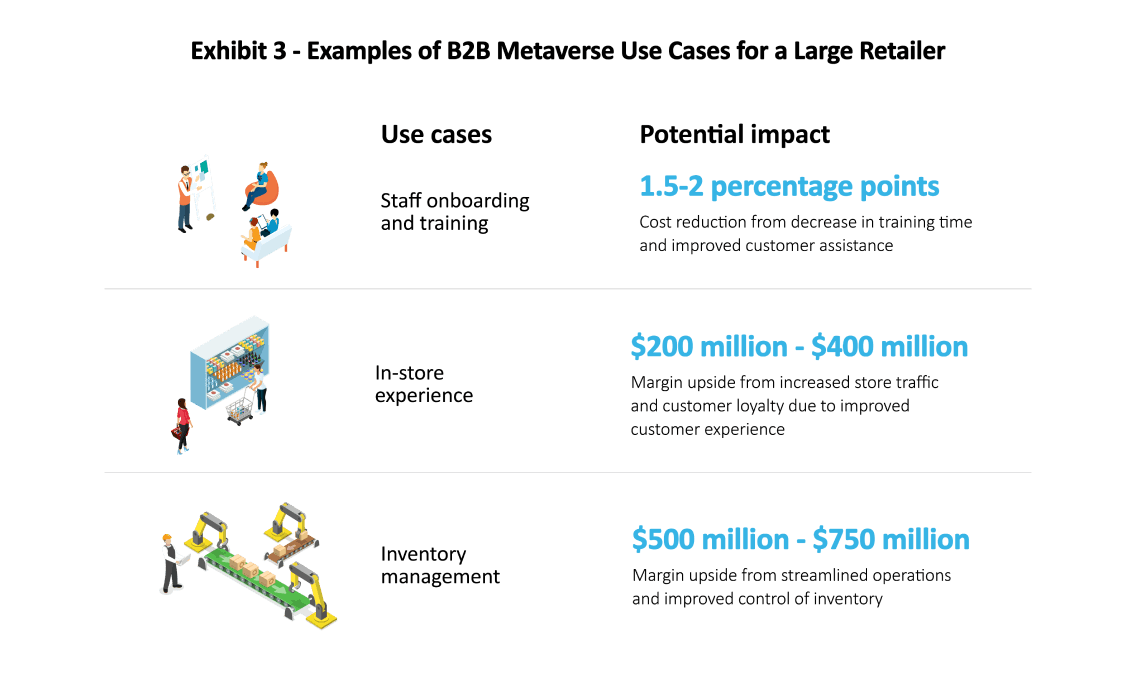Blog
Explore the metaverse: adding real value to the virtual realm
Over the course of the last few years, we have increasingly encountered a new tech phenomenon, known as ‘the metaverse’. In simplified terms, it is the next iteration of the internet – one that seamlessly combines our physical and digital spheres. It can take on many shapes including, a gaming platform, a virtual retail space, a training tool, or even a portal to an entirely new virtual experience. During the first five months of 2022, more than $120 billion was invested into projects that are dedicated to building metaverse infrastructure and related technology. Though our understanding of the metaverse may still be evolving and adapting, its potential to spark the next wave of digital disruption is undeniable. As digital technologies embrace the metaverse, companies should consider how it may change the nature of their business and whether it could be utilized to their advantage.
The Data Universe
The metaverse is based on the convergence of multiple technologies and the proliferation of data, which combine to create significant value for users. From a consumer perspective, the result might be a virtual reality (VR) gaming platform, while for businesses it could be a machine-learning algorithm that incorporates multiple data sets to provide optimized insights that improve strategic thinking. The metaverse includes broad categories of technology that fuse together in rich ways to create new value. It is flourishing, in part, due to the continual advancements in technologies like augmented reality, artificial intelligence, and machine learning. Despite seeming indefinite, its use cases are easier to identify and are also multiplying fast. (See Exhibit 1.)

Companies should view the metaverse as an opportunity to connect with consumers in innovative ways. This represents an opportunity to reinvent the customer experience and operational processes, providing a host of benefits, including greater convenience, higher efficiency, and enhanced engagement. Furthermore, it could lead to entirely new industries and business models.
Where is the metaverse experienced?
The metaverse is experienced on digital devices, such as tablets, smartphones, and VR headsets, but these are only the means of entry. The immersive potential of the metaverse can be experienced in a multitude of ways, including AR goggles or data sets produced by AI. In the metaverse, the physical world is converted into digital data and is then recreated – either as a reflection of reality or as fiction.
For businesses, the power of the metaverse lies in the data that create these virtual representations. This data can be derived from human users and their digital devices, and a myriad of other sources. It includes multiple data layers, interconnections, and mechanisms to ensure the users' trust in each use case. (See Exhibit 2.)
The data layers and connections include:
- Digital content or data
- Technology that connects the layers of digital data
- AI, machine learning, and blockchain capabilities to link and optimize data for specific use cases to ensure that users trust the security of their experience
- Connections between digital layers and the physical world

Evolution in the metaverse
The metaverse is evolving rapidly because the technologies that are converging to enable it are improving simultaneously. We see improvements in computing power, enhanced bandwidth, and better connectivity which provides higher-fidelity renderings that better mimic real-world latency.
How can enterprises use the metaverse?
Companies looking to harness the metaverse need to understand how their business strategy and sustainable advantage may need to adapt as the competition develops. They should evaluate the metaverse assets at their disposal, how their value propositions will transform, and how they can monetize metaverse assets in the future.
From a tech perspective, utilizing the metaverse for business requires companies to own and have access to data. They also need to provide robust linkages, between digital layers and the physical and virtual worlds, including IoT sensors to enable human-to-metaverse connectivity and blockchain technology. Lastly, they need to provide the tools needed to spend more time in the metaverse, such as computing power, fault tolerance, and AI.


Build a robust metaverse strategy
(See Exhibit 4.)
Embrace an agile approach
Companies should adopt a broad vision, as the metaverse will continually evolve and mature. The willingness to explore, experiment, learn, and adapt may be the key to achieving success in the virtual space.
Create a digital-twin blueprint
Start embedding metaverse use cases into regular operations, by looking for opportunities to automate digitize operations. For example, digital twins using real-time data from current operations can be used to manage and monitor development for design and improvements.
Develop digital assets
Conduct a tech audit across the metaverse stack to identify gaps that could inhibit the achievement of your goals. Develop the technical tools and platforms needed to facilitate the implementation of the plan.
Build customer trust
Companies should strive to gain trust from consumers, by demonstrating how blockchain technology is leveraged to ensure privacy and security.
Ensure customization with AI
The combination of the metaverse and AI enable the creation unique, customized offerings that can be a powerful differentiator. Companies should continuously update their understanding of evolving consumer trends to deliver ongoing personalized attention and engagement.
Measure progress
Create dashboards of transparent, real-time metrics, to monitor and assess product and operational performance.
Ensure employee buy-in
Companies can prompt engagement from their employees in the metaverse by using the metaverse to onboard, coach, and train others. If employees experience the metaverse first-hand, they will be more likely to accept and accelerate change.
Growth in the virtual space
The metaverse represents a broad opportunity that encompasses significantly more than avatars, gaming, and consumer applications. Success requires a robust understanding of the confluence of business strategy and new tools enabled through the digital sphere.